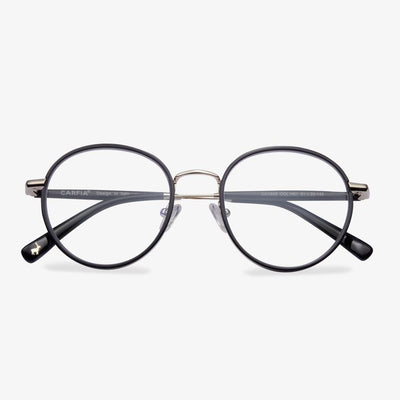Which Reading Glasses Are Most Suitable for Me?
If you have never previously required prescription glasses to improve your vision such as nearsightedness or farsightedness or astigmatism, it is highly like that you can correct your vision with non-prescription reading glasses.
People around the age of 40 to will benefit from the low power reading glasses because of the progressive nature of presbyopia. In other words, you do not need prescription glasses to correct your vision.
However, if you are around the age of 60 or older, the strength of the reading glasses will increase. However, you do not need prescription glasses.
The inadequacies of bifocals
The field of vision is smaller than that of the single vision lens, especially for the close view. For example, reading and reading newspapers need to make it coordinated with the head movement, there are optical defects of image jump and image displacement. There is a boundary, and it is easy to be seen that wearing a bifocal lens exposes age. Bifocals clearly demarcate the near and far regions, affecting appearance and vision. And when far view and close view change, the objects will jump. Because most myopic patients have a lag in the adjustment response, wearing bifocal lenses not only does not delay the development of myopia but has side effects. Therefore, bifocals are not suitable for teenagers to control myopia, and only a few special patients need to wear bifocals.
What Are Progressive Lenses?
Progressive lenses are designed for people who are over 40 years old. It is a blended multi-focal lens with distance correction at the top, intermediate in the middle, and reading at the bottom. The goal is for the lens to work how your eye naturally works to let you see things both close up and far away.
Progressive lenses are made with an hourglass shape so there is some blurriness on the outer edges, but since it gives you your full range of vision, it is generally better than a bifocal despite being similar.
What are the features of TR90 glasses?
One of the best features of the TR-90 glasses is impact resistance. If you often drop glasses or accidentally sit on them, this material reduces the impact and the frames will quickly return to their original shape. They are flexible, and can easily show your face. Much lighter than other materials, the feather-light feeling makes them comfortable. Because the TR90 frame has high elasticity and is not easy to break, it has high strength and does not break. The material of TR90 is much more expensive than other PC, CP, and other materials, and the production process is strict, so the price of the TR90 frame is several times more expensive than other frame materials. Because TR90 material has strong wear resistance, chemical resistance, and solvent resistance, it is not easy to be burned. But TR90 material is the most widely used material in China at present, and its safety performance is the best one among all materials.
The disadvantages of progressive lenses
- The field of view in the near and middle distances is relatively narrow.
- The adaptation time is longer and patients with greater astigmatism are not suitable for wearing.
- The peripheral aberration is large, and there will be large astigmatism in the periphery.
What Are Pinhole Glasses?
Pinhole glasses, also called stenopeic glasses, are plastic eyewear with hundreds of pinhole-sized perforations in place of lenses. Pinhole glasses are mostly used to improve refractive errors in the eye because they shield the eye from indirect rays of light which can distort vision. This would decrease the blur circle on the back of the retina.
Blue light in natural light
Blue light is not the unique light emitted by electronic products, but the visible light that exists in natural light, usually with a wavelength of about 400-500nm. The blue light in the entire waveband can be subdivided into two parts. One part will cause optical damage to the retina of the eye and accelerate the oxidative senescence of cells in the macular area of the retina. Usually, the wavelength of this part of blue light is between 415-450nm, and its damage to the eyes is gradually accumulated and formed. There is also a part of blue light that is beneficial to our human body, that is, blue light with a wavelength of about 480nm. It can adjust biological rhythms and is helpful for sleep, mood, and memory. In addition, experiments have confirmed that daily outdoor activities in the sun can effectively prevent the occurrence of myopia, and short-wavelength blue light may play an important role.











































